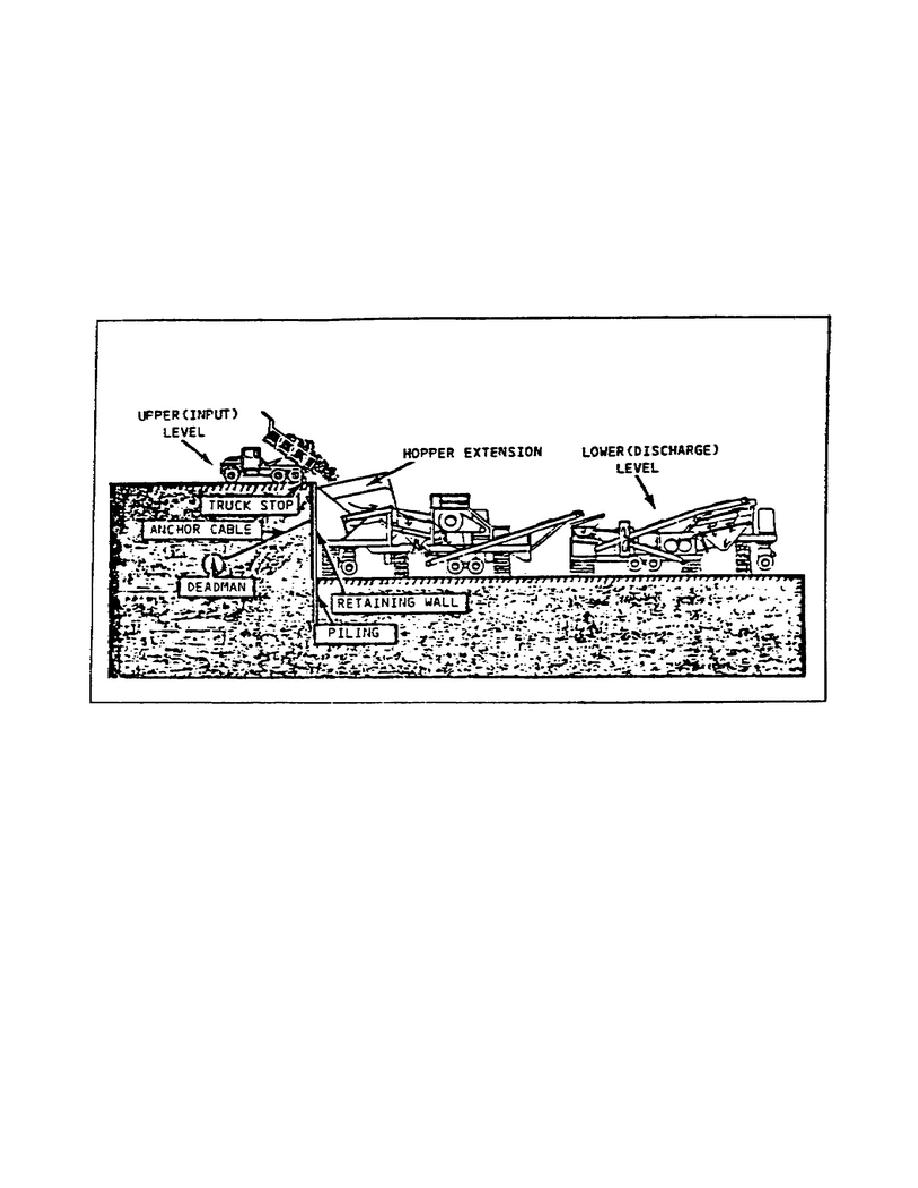
Lesson 2/Learning Event 2
Headwalls and Loading Ramps. Normally use two levels for the crushing operation (Figure 6). Quarry
run rock is dumped directly into the apron feeder or into a loading chute by trucks or dozers at the upper
level. The rock is then processed through the plant on the lower level.
For operations of short duration, material may be fed into the apron feeder by means of a clamshell,
dragline, or power shovel. These alternate methods involve double handling the material and are far less
efficient. They also create more safety hazards in the plant area. If a suitable bench is not available, a
compacted fill or crushed-rock loading ramp will have to be constructed in addition to a headwall.
FIGURE 6. CRUSHER SETUP WITH TWO WORKING LEVELS
Grizzlies and Scalping Screens. If you expect a problem with oversize material, a pre-screening grizzly
should be built in the quarry. The grizzly removes oversize rocks before it is hauled to the plant. If
undersize material is a problem, a scalping screen should be built to remove it. If the grizzly or scalping
screen cannot be built in the quarry, it may be constructed over the apron feeder of the primary unit of
the plant. In this instance, adequate space must be provided to stockpile the undesirable material until it
can be removed for disposal or secondary breakage.
Surge Piles. You should have surge piles of material ready for use at each step in the rock processing
operation. In this way all units may operate at full capacity and continue in operation despite
interruptions in the normal flow of material. For example, a surge pile of quarry run material should be
convenient to the apron feeder of the primary crusher so that a dozer or front loader can load the crusher
when haul units are not on hand. Normally this surge pile should contain enough material to sustain
operations for several days should inclement weather, maintenance or quarry blasting interrupt
36



 Previous Page
Previous Page
